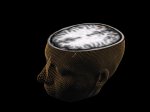Unfiltered raw news for the reader without the bullshit censured in other places; with a lot of those “ conspiracy theories” that are being proved we are correct
Wednesday, April 17, 2013
AP source: Authorities recover pressure cooker lid
By JAY LINDSAY and EILEEN SULLIVAN | Associated Press

Scores of victims of the Boston bombing remained in hospitals, many with grievous injuries. Doctors who treated the wounded corroborated reports that the bombs were packed with shrapnel intended to cause mayhem. In addition to the 5-year-old child, a 9-year-old girl and 10-year-old boy were among 17 victims listed in critical condition.

BOSTON (AP) — Authorities investigating the deadly bombings at the Boston Marathon have recovered a piece of circuit board that they believe was part of one of the explosive devices, and also found the lid of a pressure cooker that apparently was catapulted onto the roof of a nearby building, an official said Wednesday.
A law enforcement official briefed on the investigation confirmed to The Associated Press that authorities have recovered what they believe are some of the pieces of the explosive devices. The official spoke on condition of anonymity because this person was not authorized to publicly discuss evidence in the ongoing investigation.
A person close to the investigation previously told AP the bombs consisted of explosives put in 1.6-gallon pressure cookers, one with shards of metal and ball bearings, the other with nails.
Also Wednesday, a doctor at Boston Medical Center said two patients, including a 5-year-old child, remain in critical condition there. Dozens of others have been released from hospitals around Boston.
Law enforcement agencies pleaded Tuesday for the public to come forward with photos, videos or any information that might help them solve the twin bombings that killed three people and wounded more than 170 a day earlier. Investigators circulated information about the bombs, which involved kitchen pressure cookers packed with explosives, nails and other lethal shrapnel — but the FBI said nobody had claimed responsibility.
"Someone knows who did this," Richard DesLauriers, FBI agent in charge in Boston, said at a news conference where he detailed the type of clues a bomber might have left. "Importantly, the person who did this is someone's friend, neighbor, co-worker or relative."
President Barack Obama branded the attack an act of terrorism but said officials don't know "whether it was planned and executed by a terrorist organization, foreign or domestic, or was the act of a malevolent individual." Obama plans to attend an interfaith service Thursday in the victims' honor in Boston.
People react as an explosion goes off near the finish line of the 2013 Boston Marathon in Boston, Monday, April 15, 2013. Two explosions went off at the Boston Marathon finish line on Monday, sending ... more
1 / 35
| Photo By The Boston Globe, David L Ryan
Share to FacebookShare to PinterestShare to Twitter
The trauma surgery chief at Boston Medical Center says most of the injuries his hospital treated after the marathon bombings were to the legs.
"We have a lot of lower extremity injuries, so I think the damage was low to the ground and wasn't up," Dr. Peter Burke said. "The patients who do have head injuries were blown into things or were hit by fragments that went up."
Dozens of patients have been released from hospitals around the Boston area.
At Massachusetts General Hospital, all four amputations performed there were above the knee, with no hope of saving more of the legs, said Dr. George Velmahos, chief of trauma surgery.
"It wasn't a hard decision to make," he said Tuesday. "We just completed the ugly job that the bomb did."
An intelligence bulletin issued to law enforcement includes a picture of a mangled pressure cooker and a torn black bag that the FBI said were part of a bomb that exploded during the marathon.
DesLauriers said cooperation from the community will play a key role in the investigation. He said the range of suspects remained wide open, but by midday Tuesday more than 2,000 tips had been received.
The bombs exploded 10 or more seconds apart, tearing off victims' limbs and spattering streets with blood. The blasts near the finish line instantly turned the festive race into a hellish scene of confusion, horror and heroics.
The blasts killed 8-year-old Martin Richard, of Boston, and 29-year-old Krystle Campbell, of Medford. The Shenyang Evening News, a state-run Chinese newspaper, identified the third victim as Lu Lingzi. She was a graduate student at Boston University.
Officials found that the bombs in Boston consisted of explosives put in ordinary, 1.6-gallon pressure cookers, one with shards of metal and ball bearings, the other with nails, according to a person close to the investigation who spoke on condition of anonymity because the probe was still going on.
Both bombs were stuffed into black bags and left on the ground, the person said.
DesLauriers confirmed that investigators had found pieces of black nylon from a bag or backpack and fragments of BBs and nails, possibly contained in a pressure cooker. He said the items were sent to the FBI laboratory at Quantico, Va., for analysis.
Pressure-cooker explosives have been used in international terrorism, and have been recommended for lone-wolf operatives by al-Qaida's branch in Yemen.
But information on how to make the bombs is readily found online, and U.S. officials said Americans should not rush to judgment in linking the attack to overseas terrorists.
Pressure-cooker explosives have been used in Afghanistan, India, Nepal and Pakistan, according to a July 2010 intelligence report by the FBI and the Homeland Security Department. One of the three devices used in the May 2010 Times Square attempted bombing was a pressure cooker, the report said.
"Placed carefully, such devices provide little or no indication of an impending attack," the report said.
Investigators in the Boston bombing were combing surveillance tapes from businesses around the finish line and asking travelers at Logan Airport to share any photos or video that might help.
"This is probably one of the most photographed areas in the country yesterday," said Boston Police Commissioner Edward Davis. He said two security sweeps of the marathon route had been conducted before the blasts.
___
Sullivan reported from Washington. Associated Press writers Pat Eaton-Robb, Steve LeBlanc, Bridget Murphy, Rodrique Ngowi and Meghan Barr in Boston; Julie Pace and Lara Jakes in Washington; Paisley Dodds in London; Lee Keath in Cairo; and Marilynn Marchione in Milwaukee contributed to this report along with investigative researcher Randy Herschaft in New York.
Is Electromagnetic Radiation Dangerous?
Some researchers have reported that long-term exposure to power lines or cell phones might raise the risk for cancer. Most studies have focused on possible links between electromagnetic fields and childhood leukemia, but research has had conflicting results.
Studies have also examined whether these fields have any link with other cancers, depression, suicide, heart disease, reproductive problems, and other disease. The WHO Task Force Group finds evidence that electromagnetic radiation is associated with any of these problems is “weak” at best.
A study published in Epidemiology found no link between using cell phones and risk for gliomas, cancerous tumors of the brain or spinal cord. The study analyzedglioma incidence statistics from four Nordic countries (Finland, Sweden, Norway and Denmark) over a 20-year period.
Sufferers of Strange Disease Seek Refuge in Town Where Cell Phones are Illegal

Wesley Sizemore stands in front of the National Radio Astronomy Observatory in the mountains of West Virginia. (Photo by Michael Robinson-Chavez/The Washington Post/Getty Images)
A remote West Virginia town with no cell service, Wi-Fi hotspots, or TV has become a haven for people who say that wireless technology is making them sick.
Dozens of so-called “Wi-Fi refugees” suffering from a controversial malady called electromagnetic hypersensitivity (EHS) have moved to Green Bank, West Virginia, where cell phone and Wi-Fi signals are banned. An estimated five percent of Americans claim to have EHS, a condition not recognized by the scientific community.
Green Bank is located in the US National Radio Quiet Zone, a 13,000-square mile area where electromagnetic radiation on the radio spectrum—such as radio and TV broadcasts, Wi-Fi networks, and signals from cell phones, Bluetooth and other high-tech electronic devices—are outlawed, to prevent transmissions from interfering with a local radio telescope and a nearby military radio installation.
Hiding From the Wired World in a Cage
Diane Schou and her husband moved to the Appalachian town in 2007 to escape symptoms she believes are triggered by cell phone radiation. “My face turns red, I get a headache, my vision changes, and it hurts to think. Last time [I was exposed] I started getting chest pains—and to me that's becoming life-threatening," she told BBC News.
To block cell phone signals and relieve the pain, Schou’s husband built an insulated living space known as a Faraday cage on their Iowa farm. “It's a horrible thing to have to be a prisoner," she recalled. "You become a technological leper because you can't be around people.”
Now, Schou says she lives a relatively normal life in Green Bank (population 147) that includes going to church and socializing with friends. “There’s no grocery store, no restaurants, no hospital nearby,” she told Slate Magazine. “But here, at least, I'm healthy. I can do things. I'm not in bed with a headache all the time.”
Disorder Only Recognized in One Country
EHS sufferers contend that exposure to electromagnetic radiation sparks a wide range of symptoms, including facial flushing, twitchy muscles, burning or itchy skin, chest pain, headaches, sleep problems, mental fog, rapid heartbeat, ringing in the ears or hearing problems, nerve or muscle pain, nausea, and chronic fatigue.
More than 30 studies have been conducted to see if electromagnetic fields (EMF) can spark these symptoms or other health problems. So far, scientists remain skeptical. When the World Health Organization (WHO) reviewed the research in a 2004 workshop, it reported that:
“There are also some indications that these symptoms may be due to pre-existing psychiatric conditions as well as stress reactions as a result of worrying about believed EMF health effects, rather than the EMF exposure itself."
In a recent report, WHO added that, “The symptoms are certainly real and can vary widely in their severity … EHS has no clear diagnostic criteria and there is no scientific basis to link EHS symptoms to EMF exposure. Further, EHS is not a medical diagnosis, nor is it clear that it represents a single medical problem.”
Currently, Sweden is the only country that recognizes EHS as a legitimate impairing condition. In that country—where the government reports that about 3 percent of the population (some 250,000 people) are affected—those with EHS are entitled to the same legal rights and social services as those who are deaf or blind.
The government will even pay to have the homes of people with EHS electronically “sanitized” with metal shielding to block electromagnetic radiation, Popular Science Magazine reports.
Is Electromagnetic Radiation Dangerous?
Some researchers have reported that long-term exposure to power lines or cell phones might raise the risk for cancer. Most studies have focused on possible links between electromagnetic fields and childhood leukemia, but research has had conflicting results.
Studies have also examined whether these fields have any link with other cancers, depression, suicide, heart disease, reproductive problems, and other disease. The WHO Task Force Group finds evidence that electromagnetic radiation is associated with any of these problems is “weak” at best.
A study published in Epidemiology found no link between using cell phones and risk for gliomas, cancerous tumors of the brain or spinal cord. The study analyzedglioma incidence statistics from four Nordic countries (Finland, Sweden, Norway and Denmark) over a 20-year period.
Little Evidence that EHS Is Real
A trial at Sweden's University of Uppsala's Department of Clinical Psychology involved taking blood samples from people who claimed to have EHS. The samples were analyzed for indicators of stress, both before and after the test.
Some participants were exposed to electromagnetic radiation without their knowledge, but no differences were found between EHS sufferers and a control group in their reactions, nor were there any differences in stress among those who received radiation and those who didn’t.
When study participants received psychotherapy, those who identified themselves as EHS sufferers had a greater reduction in stress after the treatment than those who didn’t describe themselves to hypersensitive.
Tuesday, April 16, 2013
Beyonce Rocks Bootylicious Bodysuit at Mrs. Carter World Tour Debut
By Jenny Depper | Runway





Beyonce on Monday night in Serbia. (Splash News)Bey in 2009. (Getty Images)
Bey kicked off her Mrs. Carter world tour with a bang in Belgrade, Serbia, on Monday night – and a seriously revealing bodysuit.
When the 31-year-old hit the stage at the Kombank Arena, she had poured her bootylicous curves into a skin-tight, gold-fringed, bedazzled bodysuit, which featured a set of eye-catching nipple inserts. The racy ensemble had modest touches with long sleeves and a high neckline, but used sequins to contour the natural lines of the star's enviable body. She polished off her diva-ready look with nude fishnets and black pumps.
The outfit was nearly identical to the glittering gold, Thierry Mugler bodysuit she wore during her I Am… Sasha Fierce tour in 2009. However, that bodysuit left a little more to the imagination.
Queen B donned several other dazzling designs throughout her show, including a full black bodysuit, white-hot shorts, and a black leather dress.
The entertainer may have tossed her former alter ego, Sasha Fierce, to the wind in favor of her hubby's name for her 42-city world tour, but her gold bodysuit was just that: fierce.

Beyoncé attends the 2012 Met Gala (Getty Images)
Movie Clips Reconstructed From Brain Waves

Researchers at UC Berkeley have reconstructed video clips based only on the brain activity of the people who watched them. To the left is the original clip. To the right is an average of 100 similar clips from YouTube, picked out by a computer program that matched the clips to the brain activity triggered by the original.
CREDIT: Shinji Nishimoto, An T. Vu, Thomas Naselaris, Yuval Benjamini, Bin Yu & Jack L. Gallant
Welcome to the future: Scientists can now peer inside the brain and reconstruct videos of what a person has seen, based only on their brain activity.
The reconstructed videos could be seen as a primitive — and somewhat blurry — form of mind reading, though researchers are decades from being able to decode anything as personal as memories or thoughts, if such a thing is even possible. Currently, themind-reading techniquerequires powerful magnets, hours of time and millions of seconds of YouTube videos.
But in the long term, similar methods could be used to communicate with stroke patients or coma patients living in a "locked-in" state, said study researcher Jack Gallant, a neuroscientist at the University of
"The idea is that they would be able to visualize a movie of what they want to talk about, and you would be able to decode that," Gallant told LiveScience.
Decoding the brain
Gallant's team has decoded the brain before. In 2008, the researchers reported that they'd developed a computer model that takes in brain activity data from functional magnetic resonance imaging (fMRI), compares it to a library of photos, and spits out the photo that the person was most likely looking at when the brain activity measurements were taken. That technique was accurate at picking the right photo nine out of 10 times.
But reconstructing video instead of still images is much tougher, Gallant said. That's because fMRI doesn't measure the activity of brain cells directly; it measures blood flow to active areas of the brain. This blood flow happens much more slowly than the zippy communication of the billions of neurons in the brain. [Inside the Brain: A Journey Through Time]
So Gallant and postdoctoral researcher Shinji Nishimoto built a computer program to bridge that gap. Part of the program was a model of thousands of virtual neurons. The other half was a model of how the activity of neurons affects the blood flow to active regions of the brain. Using this virtual bridge, the researchers were able to translate information from the slow blood flow into the speedy language of neuron activity.
Movie night … for science
Next came the fun part: Three volunteers, all neuroscientists on the project, watched hours of video clips while inside an fMRI machine. Outside volunteers weren't used because of the amount of time and effort involved, and because the neuroscientists were highly motivated to focus on the videos, ensuring better brain images.
Using the brain-imaging data, Gallant and his colleagues built a "dictionary" that linked brain activity patterns to individual video clips — much like their 2008 study did with pictures. This brain-movie translator was able to identify the movie that produced a given brain signal 95 percent of the time, plus or minus one second in the clip, when given 400 seconds of clips to choose from. Even when the computer model was given 1 million seconds of clips, it picked the right second more than 75 percent of the time.
With this accurate brain-to-movie-clip dictionary in hand, the researchers then introduced a new level of challenge. They gave the computer model 18 million seconds of new clips, all randomly downloaded from YouTube videos. None of the experiment participants had ever seen these clips.
The researchers then ran the participants' brain activity through the model, commanding it to pick the clips most likely to trigger each second of activity. The result was a from-scratch reconstruction of the person's visual experience of the movie. In other words, if the participants had seen a clip that showed Steve Martin sitting on the right side of the screen, the program could look at their brain activity and pick the YouTube clip that looked most like Martin sitting on the right side of the screen.
You can see the video clips here and here. In the first clip, the original video is on the left, while an average of the top 100 clips that were closest based on brain activity is on the right. (Averages were necessary, and also the reason for the blur, Gallant said, because even 18 million seconds of YouTube videos doesn’t come close to capturing all of the visual variety in the original clips.) The second segment of the video shows the original clip at the top and reconstructions below. The far-left column is average reconstructions, while the remaining columns are individual videos picked out by the program as being closest to the original.
Watching a mind movie
The average videos look like ghostly but recognizable facsimiles of the originals. The blurriness is largely because the YouTube library of clips is so limited, making exact matches tough, Gallant said.
"Eighteen million seconds is really a vanishingly small fraction of the things you could see in your life," he said.
The mind-reading method is limited only to the basic visual areas of the brain, not the higher-functioning centers of thought and reason such as the frontal cortex. However, Gallant and his colleagues are working to build models that would mimic other brain areas. In the short term, these models could be used to understand how the brain works, much as environmental scientists use computer models of the atmosphere to understand weather and climate.
In the long term, the hope is that such technology could be used to build brain-machine interfaces that would allow people with brain damage to communicate by thinking and having those thoughts translated through a computer, Gallant said. Potentially, you could measure brain activity during dreams or hallucinations and then watch these fanciful states on the big screen.
If those predictions come true, Gallant said, there could be ethical issues involved. He and his colleagues are staunchly opposed to measuring anyone's brain activity without their knowledge and consent. Right now, though, secret brain wiretapping is far-fetched, considering that the technique requires a large, noisy fMRI machine and the full cooperation of the subject.
Not only that, but reading thoughts, memories and dreams may not be as simple as decoding simple visual experiences, Gallant said. The link between how our brain processes what we see and how it processes what we imagine isn't clear.
"This model will be a starting point for trying to decode visual imagery," Gallant said. "But how close to the ending point is hard to tell."
Computers Can 'See' People's Dreams
By Tia Ghose, LiveScience Staff Writer | LiveScience.com – Thu, Apr 4, 2013


A computer can predict what you're dreaming about based on brain wave activity, new research suggests.
By measuring people's brain activity during waking moments, researchers were able to pick out the signatures of specific dream imagery — such as keys or a bed — while the dreamer was asleep.
"We know almost nothing about the function of dreaming," said study co-author Masako Tamaki, a neuroscientist at Brown University. "Using this method, we might be able to know more about the function of dreaming."
The findings, which were published today (April 4) in the journal Science, could also help scientists understand what goes on in the brain when people have nightmares.
Sleepy mystery
Exactly why people dream is a mystery. Whereas the founder of psychoanalysis Sigmund Freud may have thought dreams were about wish fulfillment, others believe dreams are irrelevant byproducts of the sleep cycle. And yet another theory holds that dreams allow the mind to continue working on puzzles faced during the day. In general, most people believe their dreams have meaning.
Scientists have dreamt of being able to look inside the brain's sleepy wonderland. Past studies had suggested that people's brain activity can be decoded to reveal what they are thinking about: For instance, scientists have decoded movie clips from brain waves.
Dream reading
So why not try to read dreams?
Tamaki and her colleagues tracked brain activity using functional magnetic resonance imaging (fMRI) of three people as they were sleeping; the researchers woke up the trio every few minutes to have them describe their dreams. In total, the scientists collected about 200 visual images. [7 Mind-Bending Facts About Dreams]
The researchers then tied the dream content that participants described in their waking moments to specific patterns in brain activity (as seen in the blood flow in fMRI scans) and had a computer modellearn those signatures.
The computer model then analyzed each person's dreams. The model was able to pick out the time when each person dreamed of specific objects based on their brain activity when they were awake.
Those findings showed the same brain regions are activated when people are awake as when they are actually having the associated dream.
"We were amazed," Tamaki said.
Even though the team just tried to read dream imagery from one person's waking brain activity, they found some common patterns for broad classes of imagery, such as scenery versus people, Tamaki told LiveScience.
"There is a similarity amongst the subjects, so from that result, we could pick up some basic dream content and then we can build a model from those base contents, and they may apply to other people," Tamaki said.
Subscribe to:
Posts (Atom)

